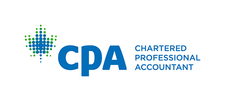Many people are still being impacted by the COVID-19 pandemic and require support. The Government of Canada has introduced three new benefit programs, The Canada Recovery Benefit (CRB), The Canada Recovery Sickness Benefit (CRSB), and the Canada Recovery Caregiving Benefit (CRCB). In this article, I will discuss the features of the Canada Recovery Benefit.
Before we begin, it is encouraged that everyone is signed up for the CRA’s My Account and ensure your info with CRA is up-to-date and register for direct deposit. CRA recommends people should also file their 2019 tax return, as this will reduce the chance you will be contacted by CRA to request additional information pertaining to your application.
The CRB will run from September 27, 2020 to September 25, 2021 and you can apply for a maximum of 13 periods during that time. You must reapply for each period. CRB will not be renewed automatically.
The CRB is a payment of $1,000, before taxes withheld, for each 2-week period you apply for. CRA holds 10% tax at source, so your actual payment will be $900.
Eligibility criteria
- You were not working due to reasons related to COVID-19
Or
- You did not apply for or receive any of the following:
- Canada Recovery Sickness Benefit (CRSB)
- Canada Recovery Caregiving Benefit (CRCB)
- short-term disability benefits
- workers’ compensation benefits
- Employment Insurance (EI) benefits
- Québec Parental Insurance Plan (QPIP) benefits
- You were not eligible for EI benefits
- You reside in Canada
- You were present in Canada
- You are at least 15 years old
- You have a valid Social Insurance Number (SIN)
- You earned at least $5,000 (before deductions) in 2019, 2020, or in the 12 months before the date you apply from any of the following sources:
- employment income
- self-employment income
- maternity and parental benefits from EI or similar QPIP benefits
- You have not quit your job or reduced your hours voluntarily on or after September 27, 2020
- You were seeking work during the period, either as an employee or in self-employment
- You have not turned down reasonable work during the 2-week period you are applying for
If your application requires additional information, the processing time can be delayed up to 4 weeks from the time you submit the application. Direct deposit with CRA usually takes 3-5 business days or 10 to 12 business days if mailed.
The content of this article is intended to provide a general guide to the subject matter. Specialist advice should be sought about your specific circumstances.

